A Misplaced Safari
First published in Sanctuary Asia,
Vol. 43
No. 2,
February 2023
Citizens living near the Aravallis ask for ecological restoration. Instead of a giant safari and zoo project, the Aravallis should have a giant protection zone, writes Neha Sinha.
In the world’s oldest fold mountains, the government wants to build the world’s largest safari. For years, residents from Haryana have been fighting to save the Aravallis from illegal mining, organised garbage dumping and real estate grabs. Now, the mountains must contend with an anachronistic plan to build a 10,000 acre safari with underwater zones, coastal areas, an aquarium, and possibly, an enclosure with our latest crush, the African cheetah.
Residents of the area and the Aravalli Bachao Citizens Movement, behind decade-long fights for conserving the Aravalli mountain range, have one question: why here? They aren’t questioning why a safari should be made, but where it should be made. In a letter to the Haryana Chief Minister Manohar Lal Khattar and the Union Environment Minister Bhupender Yadav, sent on January 19, 2023, the group has called out the plan for what it is at this point – a commercialisation of the area, cloaked as a green project.
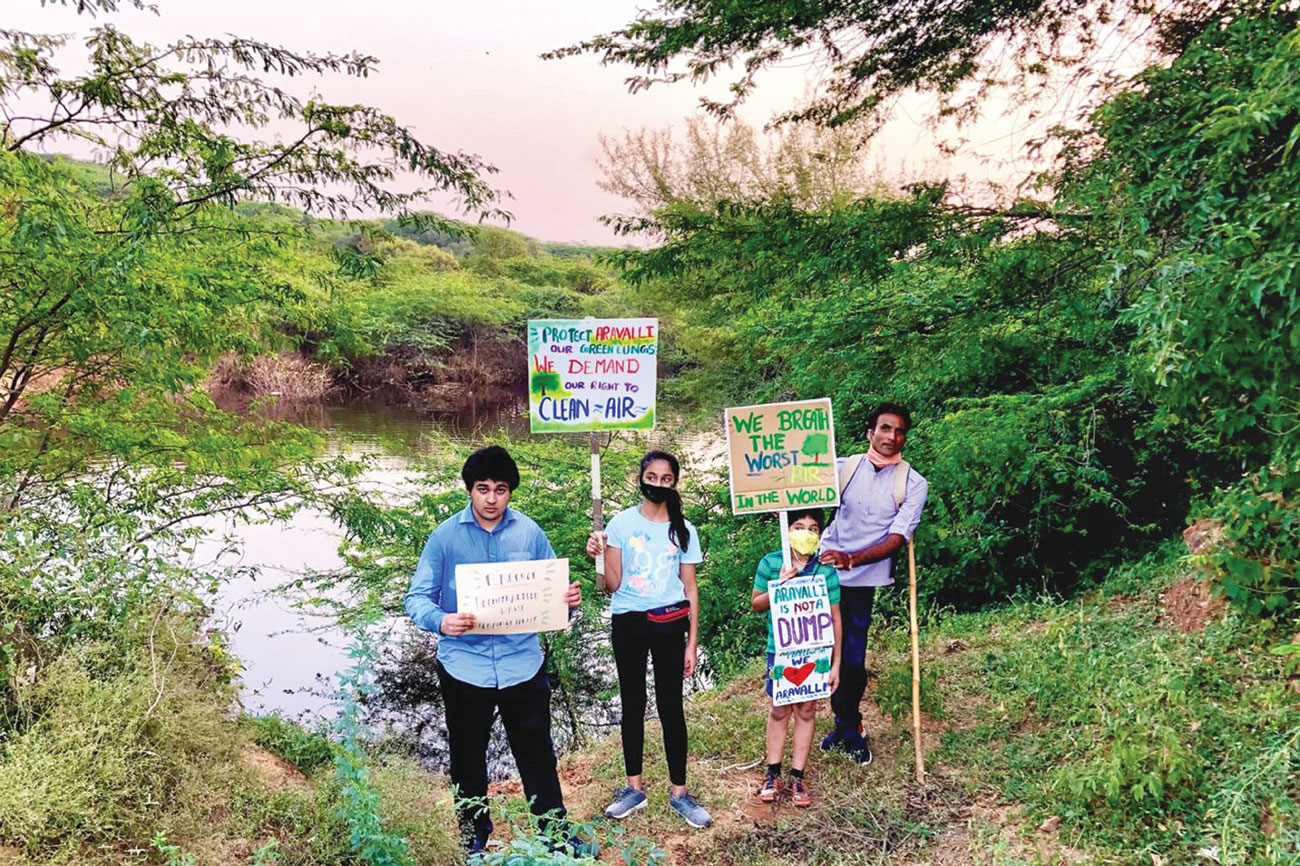
Residents of the area and the Aravalli Bachao Citizens Movement have been fighting consistently for a decade for the conservation of the Aravalli mountain range. Photo Courtesy: Aravalli Bachao Citizens Movement.
“The intervention of making a zoo safari park in the Aravallis and creating a major tourist destination by making hotels, clubs, restaurants, auditoriums, entertainment parks and landscaped gardens, and laying of electricity lines and road networks, as mentioned in the list of mandatory requirements of structures in the Aravalli Safari Park outlined in the Haryana Tourism Department’s May 2022 ‘Expression of Interest (EOI)’ document, will result in the destruction of the native ecosystem by clearing of trees, undergrowth, vegetation, grasses, ponds and other such niche habitats used by the resident wildlife. This project will result in a lot of unnecessary construction and real estate development in this eco-sensitive area, which, along with an influx of visitors and tourists, will cause more damage to the already at-risk ecosystem that has been ravaged by illegal mining and other non-forest activities. It will further exacerbate problems of waste management. The Aravalli ecosystem needs to be conserved, not constructed upon, and left alone as a home for native wildlife and to serve the critical ecological functions it performs for India’s highly polluted and water-stressed National Capital Region and south Haryana,” says Neelam Ahluwalia, Founder Member and Trustee, Aravalli Bachao Citizens Movement.
The zoo safari project, helmed by Haryana’s Tourism Department, has revenue as its primary goal. A position paper by the Aravalli Bachao Citizens Movement and leading conservationists, sent to the government, points out:
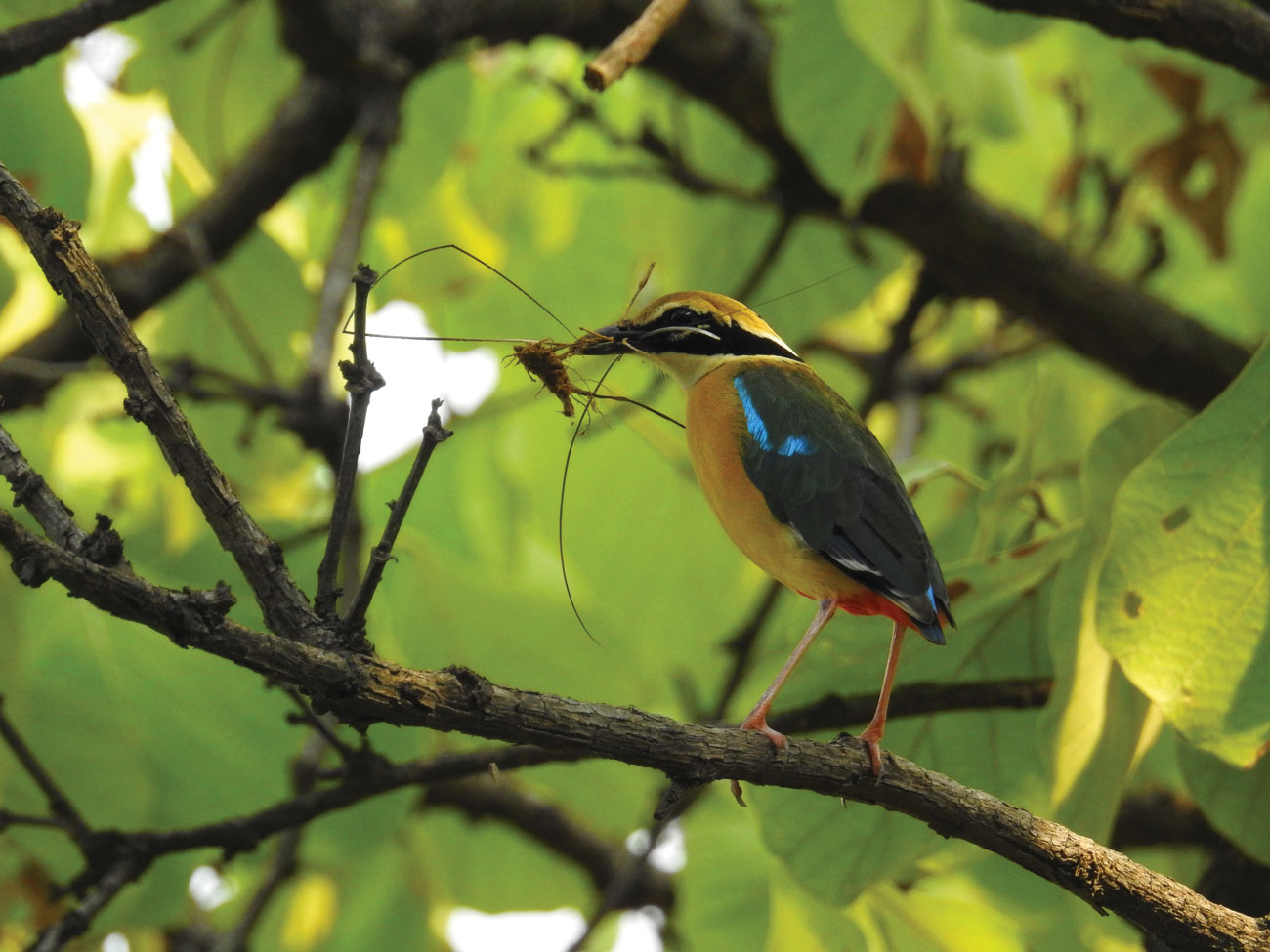
The proposed zoo turns a blind eye towards the rich existing biodiversity of the Aravallis. Along with the Indian Paradise Flycatcher Terpsiphone paradisi, the Indian Pitta Pitta brachyura has been recorded nesting here. Photo: Neha Sinha.
“The May 2022 EOI document of the Haryana Tourism Department explicitly states that the aim of this project is to increase tourist footfall in the state and to increase government and private investment in the tourism sector. Conservation of the Aravallis does not even get a mention in the aims of the project. The primary purpose of any intervention in the eco-sensitive Aravallis must be ‘conservation and restoration of the Aravallis’, with any revenue generation activities being limited by guidelines of National Parks and Protected Forest Reserves.”
The movement has a clear ask – to declare the 670 km. Aravalli range running across the four states of Delhi, Haryana, Rajasthan and Gujarat as a Biosphere Reserve, so that northwest India’s climate regulator, shield against desertification, critical water recharge zone, pollution sink, biodiversity hotspot and wildlife habitat can be protected for our future generations. They also ask for an independent study by ecologists and wildlife researchers on bird and animal life and their movement in the 10,000 acres of the Aravallis, to determine the best conservation plan for this extremely critical eco-sensitive area.
Making zoo enclosures will impede the movement of wildlife. Instead of bringing in exotic or foreign wildlife, the area, already degraded by illegal mining, should be restored and people should be taken to enjoy nature walks, forest immersion and native bird and wildlife watching.
“What does the government plan to do with the native Aravalli wildlife that already exists in these 10,000 acres of land in Gurugram and Nuh districts, where the government is planning this zoo safari? Will the wild Aravalli species roaming in the Aravalli hills and forests be captured and put in the enclosures with the other zoo animals?” asks Jyoti Raghavan, Managing Trustee, Aravalli Bachao Citizens Movement.
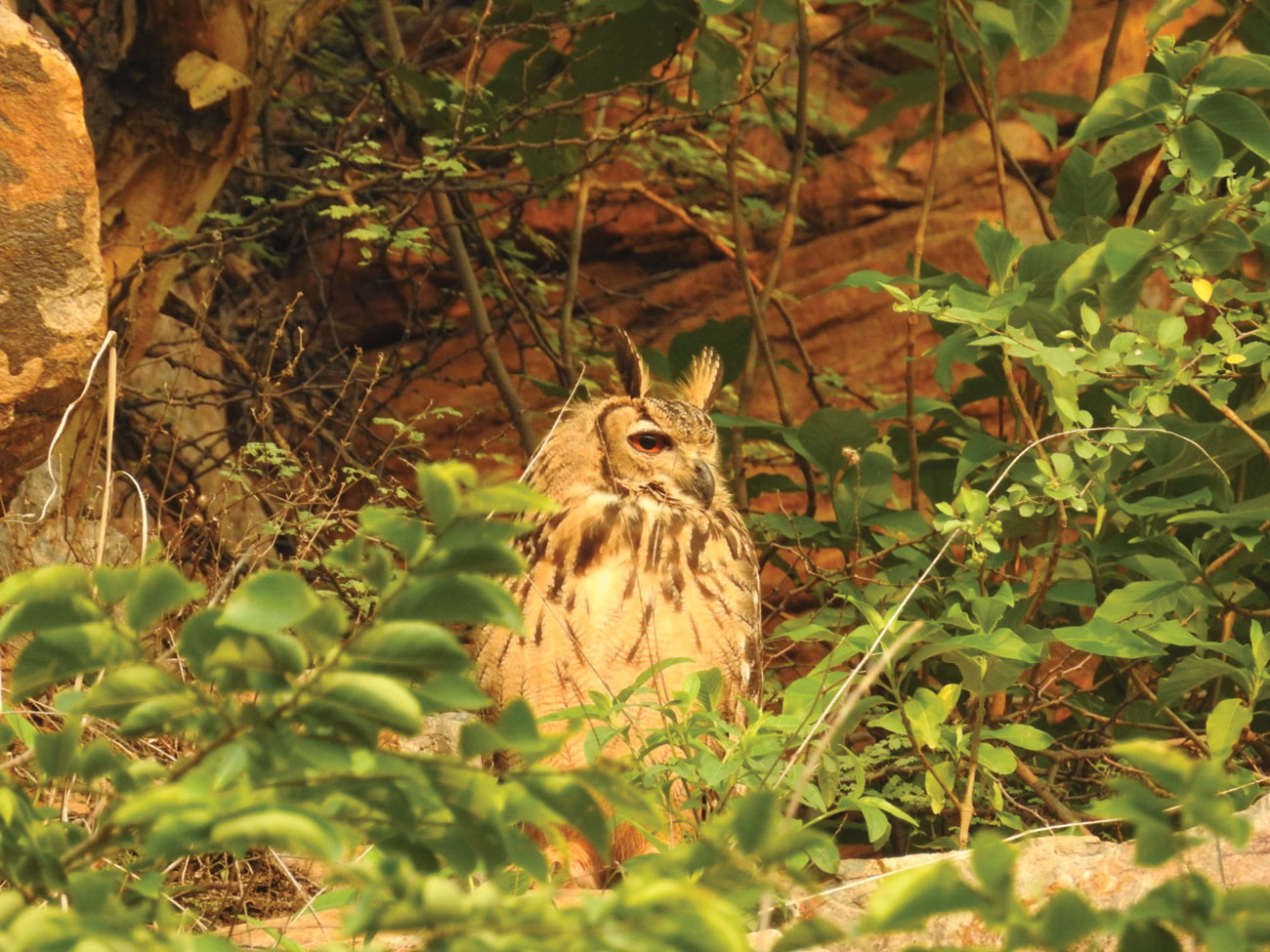
The taxonomic database Avibase shows a bird checklist of 343 species including the Indian Eagle-Owl Bubo bengalensis. Photo: Neha Sinha.
A Long Battle
The Aravallis seem cursed by their proximity to the national capital’s development-at-all-cost hunger, but also blessed by a long citizen’s movement that has worked hard to protect it, in the face of real estate and mining lobbies.
Once full of tigers (Sariska in Rajasthan was connected to other parts of the range), the Aravallis have been broken down for mining, eaten away by real estate and housing projects, and even used as a site for municipal garbage near Gurugram. In sum, they have been seen as everything but what they really are: a valuable heritage area, with location-specific plants and trees, and an ecosystem that still has tigers, leopards, hyenas, vultures and rivers.
This is a situation that is at once environmentally ruinous as well as a security threat. Keeping an eye out for and reporting on illegal mining can be dangerous. Yet, the Aravalli Bachao Citizens Movement has gone to court against illegal stone and sand mining that continues in the area. Others have approached court against massive real estate projects on forest land. Recently, the National Green Tribunal (NGT) constituted a joint committee to examine illegal mining in Gurugram, Nuh and Faridabad (incidentally, this overlaps with the area for the safari proposal). The committee found that illegal mining continues unabated in the area, and deep trenches were easily visible. Citizens have collected photographic evidence of entire hills vanishing.
The NGT has now directed the Mining Department in Haryana to set up a control room and notify its mobile number and email ID so people can lodge complaints of illegal mining.
Yet, there are more problems facing the area. A huge garbage landfill in Bandhwari, near Gurugram, sits on the Aravallis, leaching poisonous substances into the forest soil and water. The NGT recently imposed a fine of INR 100 crore on the Haryana government for continued ecological damage to the Aravallis and public health due to mismanagement of the Bandhwari landfill. Sadly, this mountain of toxic waste is now higher than the surrounding Aravalli hills!
While our forests deserve restoration and stewardship, providing clean air, water and recreation, we also seem determined to turn them into our dirtiest places.
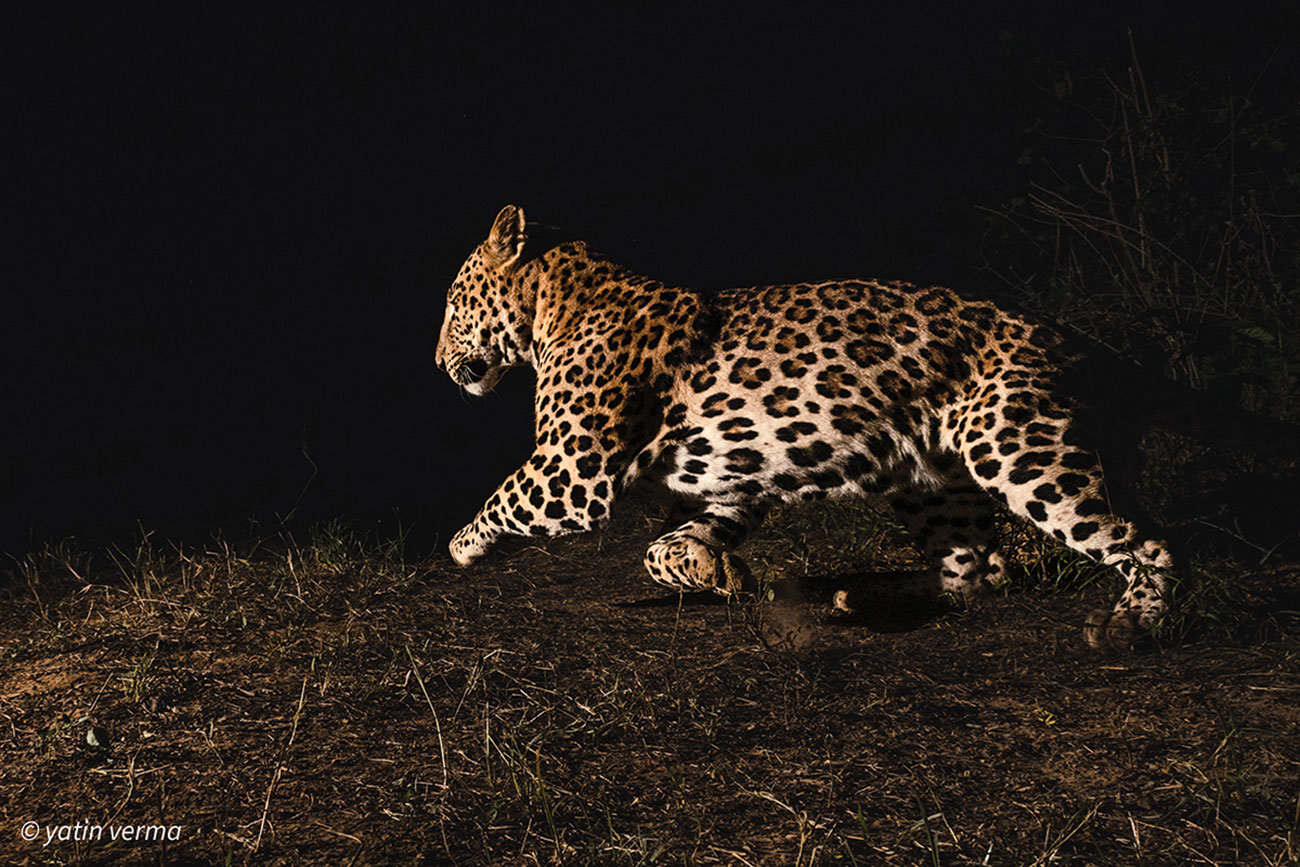
A common leopard Panthera pardus darts across the frame in this camera trap image taken in Asola Bhatti, Delhi’s only wildlife sanctuary. Photo: BNHS Delhi CEC/Yatin Verma.
Within this official neglect, the zoo safari plan posits itself as one that is ‘clean and green’. There have even been statements that trees will be planted at the spot to ‘compensate’ for the destructive trans-shipment project in Great Nicobar, which will destroy 130 sq. km. of forest. Clearly though, trees planted in a safari are not a replacement for tropical forest; a safari in this stated form is not a project that restores, conserves or helps native wildlife.
In the recent meeting of the Convention on Biological Diversity, the majority of countries of the world have agreed to a new Global Biodiversity Framework. These are targets the world must achieve in order to stabilise and protect biodiversity, even as climate change burns our lives. The most talked about goal is thirty by thirty. It is as follows:
Ensure that at least 30 per cent globally of land areas and of sea areas, especially areas of particular importance for biodiversity and its contributions to people, are conserved through effectively and equitably managed, ecologically representative and well-connected systems of protected areas and other effective area based conservation measures, and integrated into the wider landscapes and seascapes.
The government wants a zoo or a safari to be interpreted as an activity that’s allowed in a forest. But on July 21, 2022, the Supreme Court held that land area covered under special orders of Section 4 of the Punjab Land Preservation Act (PLPA), which covers some of the Aravallis in Gurugram, be treated as ‘Forest’. This means that the provisions of the Forest Conservation Act (FCA), 1980 should apply. As per FCA, activities like felling of trees and construction are considered as non-forest activities.
A safari is a non-site specific activity, and can be made anywhere. Ecologically, making a giant safari with retail spaces and commercial zones cannot be considered a ‘forest activity’. Further, a plan that involves foreign wildlife at the cost of native wildlife should be immediately relooked.
The solution, conservationists and citizens say, is to create a robust ecological restoration plan for the 10,000 acres of Aravallis in Gurugram and Nuh, which can then be replicated in other Aravalli areas in Haryana. An example of this already exists in the 400 acres of the Aravalli Biodiversity Park, which has created forests, grasslands and scrublands on an area degraded by mining. Today the park is home to butterflies, birds, odonates and mammals, not to mention an active human community that cherishes the area for walks and nature watching.
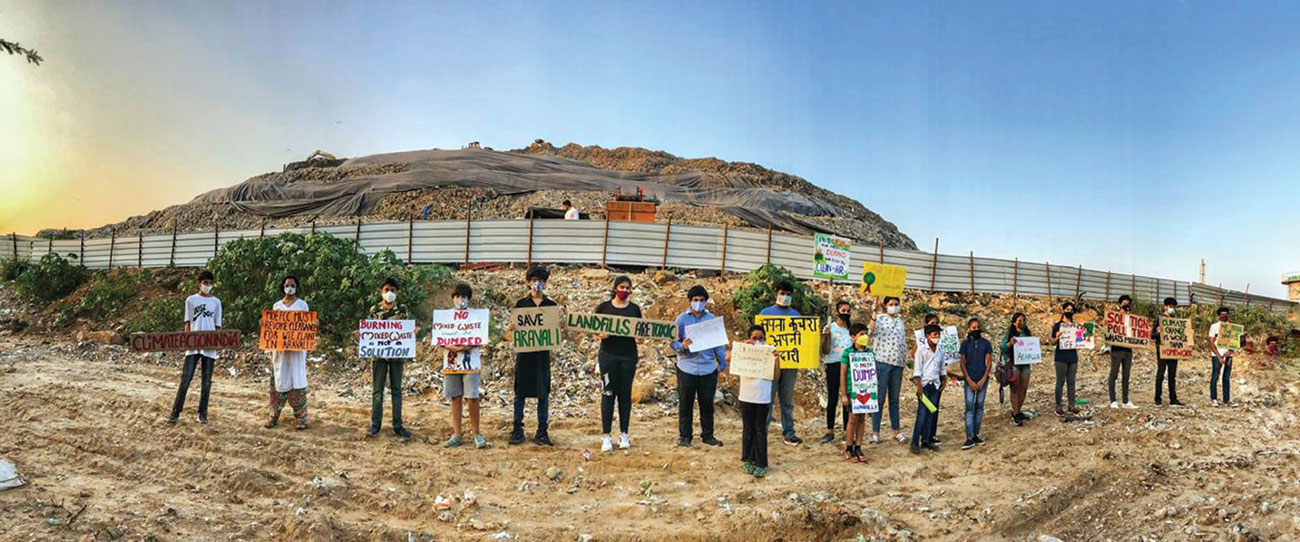
Citizens protest against the backdrop of a huge garbage landfill in Bandhwari, near Gurugram. The landfill sits on the Aravallis, leaching poisonous substances into the forest soil and water. The National Green Tribunal has recently imposed a fine of INR 100 crore on the Haryana government for continued ecological damage to the Aravallis and public health on account of mismanagement of the Bandhwari landfill. This mountain of toxic waste is now higher than the surrounding Aravalli hills. Photo Courtesy: Aravalli Bachao Citizens Movement.
Wildlife In Aravallis – A Live Corridor
A recent study of Asola Bhatti Wildlife Sanctuary, Delhi’s only wildlife sanctuary, recorded incredible biodiversity. A year-long camera trapping exercise was carried out by the Forest Department, Government of National Capital Territory of Delhi, helped by Bombay Natural History Society’s (BNHS) Delhi Conservation Education Centre. Asola is connected to the Aravalli forests in Haryana and is part of a functional wildlife corridor.
A grid-based stratified sampling method was used after a six-month long ground survey. The Sanctuary was divided into three blocks, with seven grids in each block of one square kilometre. Camera trap stations were set up in each grid with two cameras facing each other so that both flanks of an animal could be captured. The sampling duration for each block was 28 days, with a total of 84 days over the year. The results were incredible. More than 14,000 stills of different mammals were captured. Eight unique leopards were identified.
Apart from leopards, the other mammals that were recorded were striped hyena, jungle cat, golden jackal, Indian hare, Indian pig, nilgai, blackbuck, sambar, chital, hog deer, rhesus macaque, Indian crested porcupine, two species of civet – the small Indian and Asian palm, and three species of mongoose – ruddy, small Indian, and Indian grey. Also recorded on camera traps were domestic cats, dogs, cows, buffalos and goats. Asola probably has two to four striped hyena, the scavengers responsible for cleaning carcasses. On account of lack of clear photographs, the individual identification of hyenas was not possible.
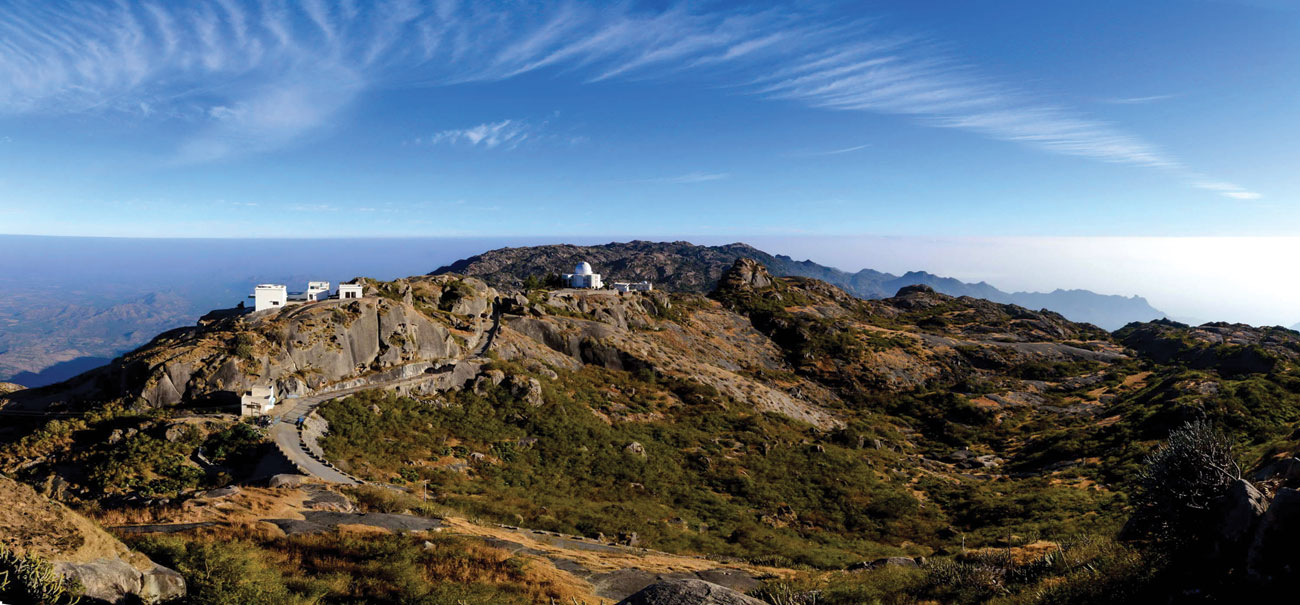
The Aravallis are an ancient fold mountain range. At 1,722 m. Guru Shikhar is the highest peak in Mount Abu. The Aravalli Range is arguably the oldest geological feature on Earth, having its origin in the Proterozoic era. Photo: Public Domain/Brahma Kumaris.
The findings from this study should play an important role in designing management and conservation plans for Asola, keeping the leopard and other vulnerable species in mind. It also shows the potential that the Aravallis have as a wildlife refuge and habitat, if protected. Leopards, hyenas and other mammals use the larger landscape around Asola to disperse. This wildlife corridor must be restored.
A large part of the 10,000 acres identified for the Aravalli zoo safari park in Haryana harbours a rich diversity of native Aravalli wildlife including more species of mammals such as the northern plains langur, honey-badger, Indian fox, jungle cat, ruddy mongoose, leopards, striped hyenas and others, as brought out in a 2019 survey of the Aravalli forests of Gurugram and Faridabad, supported by WWF-India.
Yet, there is no designated national park or wildlife sanctuary just for protecting the Aravallis of Haryana at a landscape level, unlike the state of Rajasthan, which has protected the Aravalli mountains in the Sariska National Park. The demand for protecting Aravallis for their native wildlife is well-suited for the natural riches of the area. Is anyone listening?







